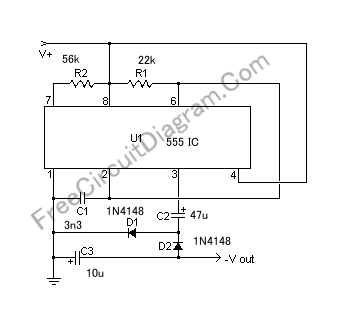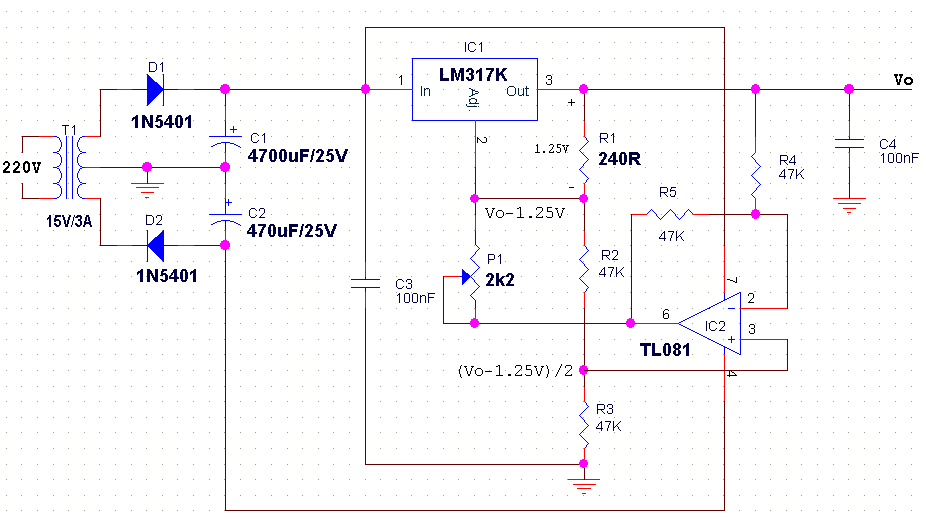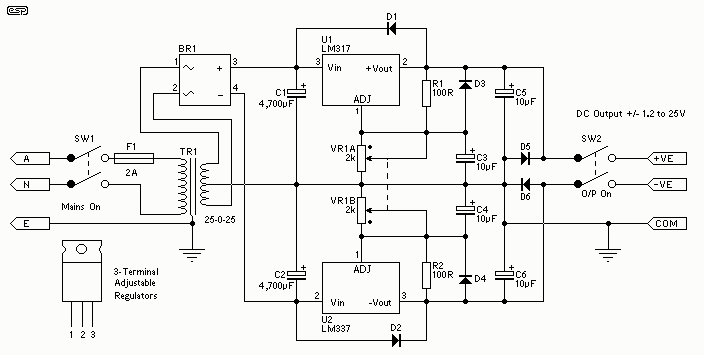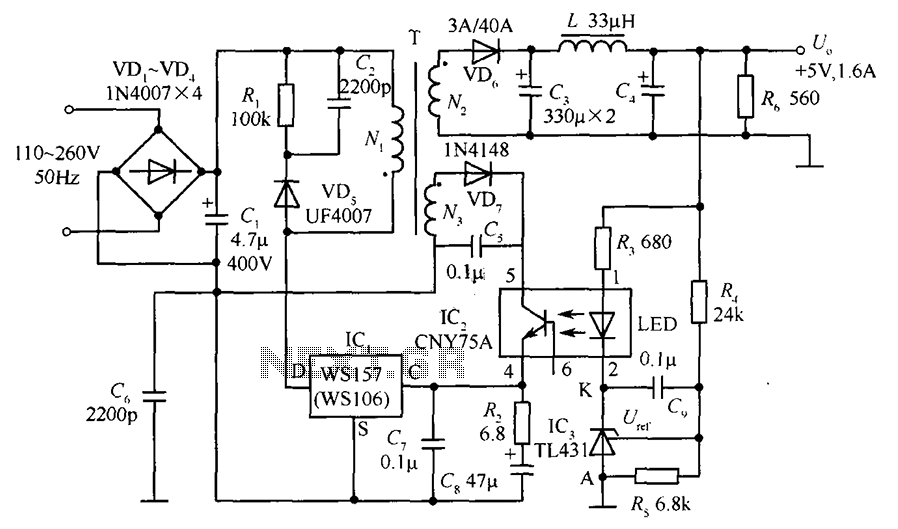
DC Supply

The circuit is a linear regulator providing galvanic isolation from main line through the use of isolation transformer. Quite safe for experimenting with AC voltage. Below pictures show the example of input/output terminal connections, labeling and components placement in the box. The circuit can be built using universal PCB. The output terminal is for big load connection so this makes it quite strong and good electrical contact to the load being used.
The circuit operates as a linear voltage regulator, designed to provide a stable output voltage while ensuring safety through galvanic isolation. The isolation transformer is a critical component, as it separates the circuit from the main AC line, preventing any direct electrical connection that could pose a shock hazard during experiments with AC voltage.
The linear regulator functions by maintaining a constant output voltage, which is essential for powering sensitive electronic components or devices that require a specific voltage level. The use of an isolation transformer not only enhances safety but also improves the overall reliability of the circuit by filtering out high-frequency noise that may be present on the AC line.
The schematic typically includes input and output terminals clearly labeled for easy connection to the power source and the load, respectively. The input terminal connects to the primary side of the isolation transformer, while the output terminal connects to the load, ensuring that the load receives a stable and isolated voltage supply.
The circuit can be constructed on a universal PCB, allowing for flexibility in component placement and layout. This adaptability is beneficial for prototyping and testing various configurations. The output terminal is designed to handle significant loads, ensuring robust electrical contact and minimizing voltage drop across connections.
In summary, this linear regulator circuit with galvanic isolation is well-suited for experimental applications involving AC voltage, providing both safety and stability. The careful arrangement of components and the use of an isolation transformer make it an effective solution for powering various electronic projects.The circuit is a linear regulator providing galvanic isolation from main line through the use of isolation transformer. Quite safe for experimenting with AC voltage. Below pictures show the example of input/output terminal connections, labeling and components placement in the box.
The circuit can be built using universal PCB. The output terminal is for big load connection so this makes it quite strong and good electrical contact to the load being used. My workbench has many broken devices and most of them will be used as the part for making the electronic projects. One day I looked at the broken radio, I found there`s an AC line cord with socket and a transformer. Actually I like the way they used 🔗 External reference
The circuit operates as a linear voltage regulator, designed to provide a stable output voltage while ensuring safety through galvanic isolation. The isolation transformer is a critical component, as it separates the circuit from the main AC line, preventing any direct electrical connection that could pose a shock hazard during experiments with AC voltage.
The linear regulator functions by maintaining a constant output voltage, which is essential for powering sensitive electronic components or devices that require a specific voltage level. The use of an isolation transformer not only enhances safety but also improves the overall reliability of the circuit by filtering out high-frequency noise that may be present on the AC line.
The schematic typically includes input and output terminals clearly labeled for easy connection to the power source and the load, respectively. The input terminal connects to the primary side of the isolation transformer, while the output terminal connects to the load, ensuring that the load receives a stable and isolated voltage supply.
The circuit can be constructed on a universal PCB, allowing for flexibility in component placement and layout. This adaptability is beneficial for prototyping and testing various configurations. The output terminal is designed to handle significant loads, ensuring robust electrical contact and minimizing voltage drop across connections.
In summary, this linear regulator circuit with galvanic isolation is well-suited for experimental applications involving AC voltage, providing both safety and stability. The careful arrangement of components and the use of an isolation transformer make it an effective solution for powering various electronic projects.The circuit is a linear regulator providing galvanic isolation from main line through the use of isolation transformer. Quite safe for experimenting with AC voltage. Below pictures show the example of input/output terminal connections, labeling and components placement in the box.
The circuit can be built using universal PCB. The output terminal is for big load connection so this makes it quite strong and good electrical contact to the load being used. My workbench has many broken devices and most of them will be used as the part for making the electronic projects. One day I looked at the broken radio, I found there`s an AC line cord with socket and a transformer. Actually I like the way they used 🔗 External reference
Warning: include(partials/cookie-banner.php): Failed to open stream: Permission denied in /var/www/html/nextgr/view-circuit.php on line 713
Warning: include(): Failed opening 'partials/cookie-banner.php' for inclusion (include_path='.:/usr/share/php') in /var/www/html/nextgr/view-circuit.php on line 713





